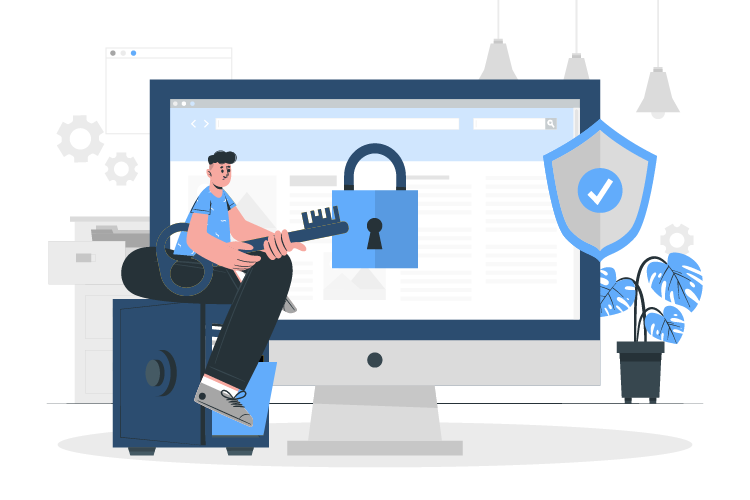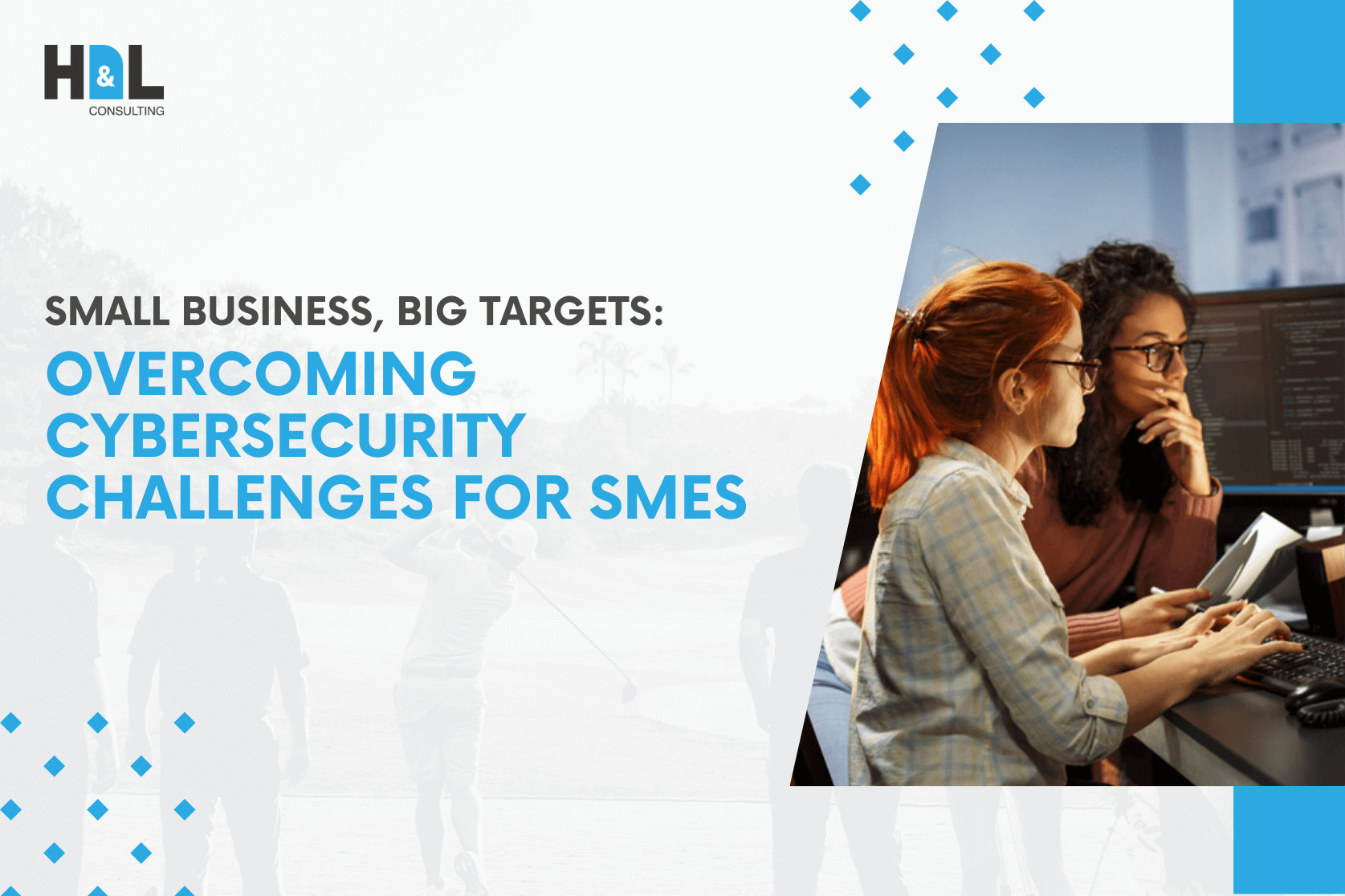In today’s interconnected digital landscape, small and medium-sized enterprises (SMEs) are increasingly becoming prime targets for cybercriminals. While large corporations often grab headlines when they suffer from data breaches or ransomware attacks, SMEs face an equally significant threat, albeit with fewer resources to combat it. As businesses across the globe digitize their operations, the importance of cybersecurity for SMEs cannot be overstated.
Despite their size, small businesses hold valuable data—whether it’s customer information, intellectual property, or financial records—that cybercriminals can exploit. The misconception that only large corporations need robust cybersecurity measures is a dangerous one. In reality, SMEs are often seen as low-hanging fruit by hackers, making cybersecurity a critical component of any business strategy. This article delves into the unique cybersecurity challenges faced by SMEs and provides actionable strategies to protect small businesses from evolving cyber threats.
The Growing Threat Landscape
The Appeal of Small Businesses to Cybercriminals
Cybercriminals often target small businesses because they tend to have weaker cybersecurity defenses compared to larger organizations. While an SME may not have the vast resources or data troves of a multinational corporation, the reality is that even minimal amounts of data can be monetized on the dark web. Moreover, small businesses often have less complex security protocols, making them easier to infiltrate.
The consequences of a cyber-attack can be devastating for an SME. According to a report by the National Cyber Security Alliance, 60% of small businesses that experience a cyber-attack go out of business within six months. This statistic underscores the critical need for robust cybersecurity for SMEs to protect their operations and their futures.
Common Cybersecurity Challenges for SMEs
1. Limited Resources
One of the most significant cybersecurity challenges for SMEs is the lack of resources. Unlike large corporations, small businesses often operate on tight budgets, with limited funds available for cybersecurity initiatives. This financial constraint can lead to inadequate security measures, such as outdated software, lack of employee training, and insufficient IT staff.
2. Lack of Cybersecurity Expertise
SMEs often lack the in-house expertise needed to navigate the complex world of cybersecurity. Without dedicated IT professionals, many small businesses rely on generalist staff who may not have the specific skills needed to implement and maintain robust security protocols. This lack of expertise can lead to vulnerabilities that cybercriminals are eager to exploit.
3. Complex and Evolving Threats
The cybersecurity landscape is constantly evolving, with new threats emerging regularly. From phishing attacks to ransomware, SMEs face a wide array of cyber threats, each requiring different defensive strategies. Keeping up with the latest developments in cybersecurity can be overwhelming for small businesses, particularly when they lack the resources to invest in the latest technologies.
4. Employee Negligence
Human error is one of the most significant cybersecurity challenges for SMEs. Employees may inadvertently click on phishing emails, use weak passwords, or neglect to update software—all of which can create entry points for cybercriminals. Without proper training and awareness programs, employees can become the weakest link in a small business’s cybersecurity defense.
5. Supply Chain Vulnerabilities
SMEs often operate as part of a larger supply chain, which can expose them to additional cybersecurity risks. Cybercriminals may target smaller businesses to gain access to larger organizations within the supply chain. As a result, SMEs must protect their own data and ensure that they do not become a gateway for attacks on their partners and clients.

You may also like these blogs:
The Future Of Cybersecurity: Predictions For The Next Decade
How A Human-Centric Approach Can Bridge The Gap In Cybersecurity
Strategies for Protecting Small Businesses
Despite these challenges, there are several effective strategies that SMEs can implement to enhance their cybersecurity posture. By taking a proactive approach and leveraging available resources, small businesses can significantly reduce their vulnerability to cyber-attacks.
1. Implement Basic Cyber Hygiene Practices
One of the most cost-effective ways for SMEs to enhance their cybersecurity is to implement basic cyber hygiene practices. This includes:
- Regular Software Updates: Ensure that all software, including operating systems and applications, is regularly updated to protect against known vulnerabilities.
- Strong Password Policies: Encourage the use of strong, unique passwords for all accounts and implement multi-factor authentication (MFA) where possible.
- Data Encryption: Encrypt sensitive data both at rest and in transit to protect it from unauthorized access.
- Regular Backups: Regularly back up critical data and store it in a secure location, ensuring that it can be restored in the event of a ransomware attack or data breach.
2. Invest in Employee Training
Given that human error is a significant factor in many cyber attacks, investing in employee training is essential for SMEs. Regular cybersecurity training programs can help employees recognize phishing attempts, understand the importance of strong passwords, and follow best practices for data security.
Training should be an ongoing process, with regular updates to keep employees informed about the latest threats and how to respond to them. Consider incorporating simulated phishing exercises to test employees’ knowledge and reinforce good cybersecurity habits.
3. Adopt a Layered Security Approach
A layered security approach, also known as defense in depth, involves implementing multiple layers of security controls to protect against different types of threats. For SMEs, this might include:
- Firewalls: Install firewalls to protect your network from unauthorized access.
- Antivirus Software: Use reputable antivirus software to detect and remove malware.
- Intrusion Detection Systems (IDS): Implement IDS to monitor your network for suspicious activity.
- Endpoint Protection: Secure all endpoints (e.g., computers, mobile devices) with up-to-date security software.
By adopting a layered approach, SMEs can create multiple barriers that cybercriminals must overcome, reducing the likelihood of a successful attack.
4. Utilize Managed Security Services
For SMEs that lack in-house cybersecurity expertise, partnering with a managed security service provider (MSSP) can be a viable solution. MSSPs offer a range of services, including monitoring, threat detection, incident response, and vulnerability assessments. By outsourcing cybersecurity to professionals, SMEs can benefit from advanced security measures without the need to invest in expensive infrastructure or hire specialized staff.
5. Develop an Incident Response Plan
No cybersecurity strategy is foolproof, so it’s essential for SMEs to have an incident response plan in place. This plan should outline the steps to take in the event of a cyber attack, including how to contain the breach, notify affected parties, and recover data.
An effective incident response plan can minimize the damage caused by a cyber attack and ensure that your business can resume operations as quickly as possible. Regularly review and update your plan to account for new threats and changes in your business operations.
6. Ensure Compliance with Regulations
Many industries have specific cybersecurity regulations that SMEs must comply with, such as the General Data Protection Regulation (GDPR) in the European Union or the Health Insurance Portability and Accountability Act (HIPAA) in the United States. Non-compliance can result in hefty fines and legal repercussions, so it’s crucial for SMEs to stay informed about the regulations that apply to their business.
Consider conducting a compliance audit to identify any gaps in your current cybersecurity practices and take steps to address them. Compliance not only protects your business from legal penalties but also enhances your reputation with customers and partners.
7. Cyber Insurance
Cyber insurance can be a valuable safety net for SMEs, providing financial protection in the event of a cyber attack. Cyber insurance policies typically cover costs associated with data breaches, business interruption, and legal fees. While it should not be viewed as a substitute for robust cybersecurity measures, cyber insurance can help mitigate the financial impact of a cyber attack.
When choosing a cyber insurance policy, carefully review the coverage options to ensure that they align with your business’s specific risks and needs.
The Role of Technology in SME Cybersecurity
As technology continues to advance, SMEs have access to a growing array of tools and solutions to enhance their cybersecurity. From artificial intelligence (AI) and machine learning (ML) to cloud-based security platforms, leveraging the right technology can significantly bolster your defenses.
1. AI and ML for Threat Detection
AI and ML can play a crucial role in detecting and responding to cyber threats in real-time. These technologies can analyze vast amounts of data to identify patterns and anomalies that may indicate a cyber attack. By automating threat detection, AI and ML can help SMEs respond to attacks more quickly and effectively, reducing the potential for damage.
2. Cloud Security
Cloud-based security solutions offer several advantages for SMEs, including scalability, flexibility, and cost-effectiveness. Cloud providers often offer built-in security features, such as encryption and access controls, that can enhance your overall security posture. Additionally, cloud security solutions are typically updated automatically, ensuring that your defenses are always up-to-date.
3. Security Information and Event Management (SIEM)
SIEM systems aggregate and analyze security data from across your network, providing real-time insights into potential threats. While traditionally used by larger organizations, SIEM solutions are increasingly accessible to SMEs, offering advanced threat detection and incident response capabilities.

Conclusion
In the digital age, cybersecurity is not just a concern for large corporations—it’s a critical priority for SMEs as well. While small businesses may face unique challenges, such as limited resources and expertise, they can implement several effective strategies to protect themselves from cyber threats.
By adopting a proactive approach to cybersecurity, investing in employee training, utilizing the latest technologies, and partnering with managed security service providers, SMEs can significantly reduce their risk of falling victim to cyber attacks. Ultimately, the key to protecting your small business lies in understanding the threats you face and taking decisive action to mitigate them. Remember, when it comes to cybersecurity, prevention is always better than cure.
Implementing these strategies not only safeguards your business but also instills confidence in your customers, partners, and stakeholders—ensuring that your SME can thrive in an increasingly digital world.
If you are looking for an experienced IT provider, H&L Consulting is the best option. With years of experience, we specialize in mobile app development, web app development, staff augmentation, and robot process automation. Our staff of over 30 highly qualified IT consultants and developers can handle projects of any scale. We are committed to supporting your goals after successfully delivering over 50 solutions to clients throughout the world. Contact us for a full discussion, knowing that H&L Consulting is prepared to fulfill all your IT demands with specialized, effective solutions.









